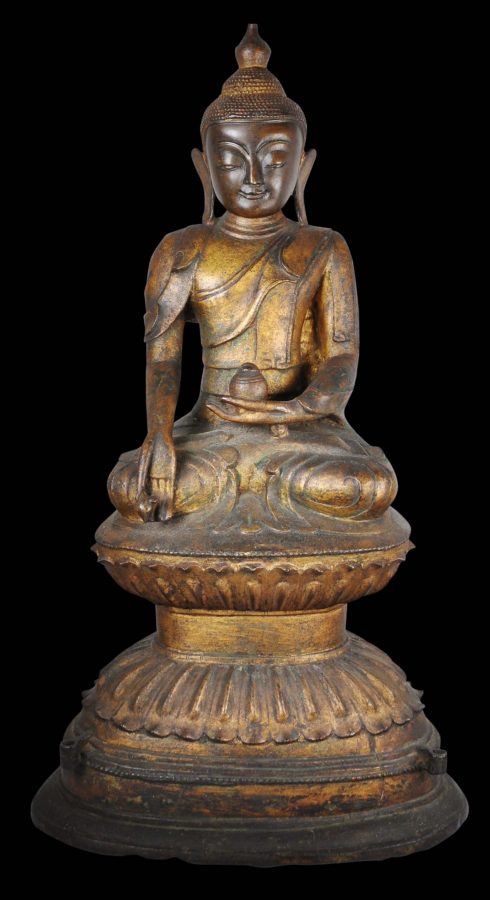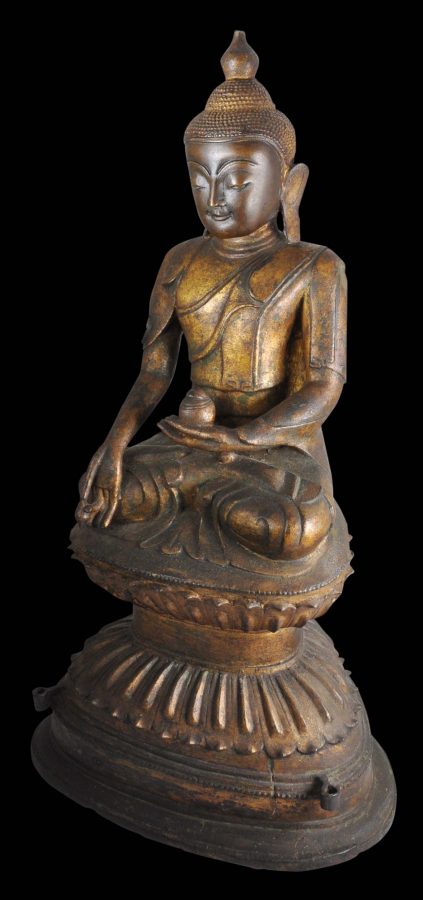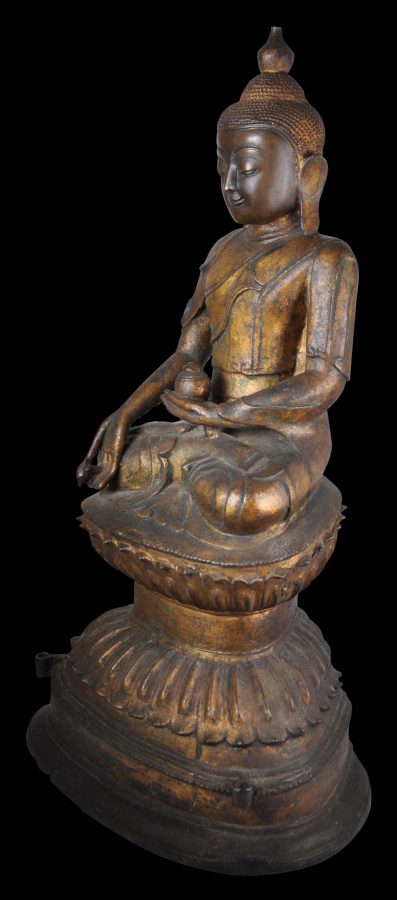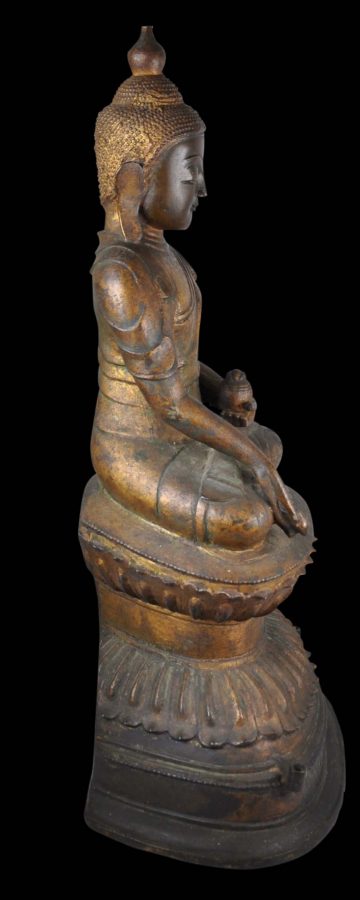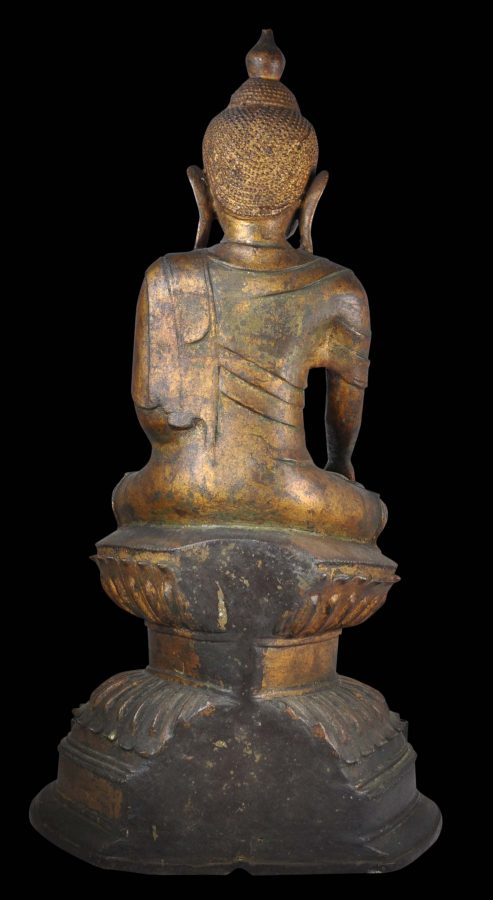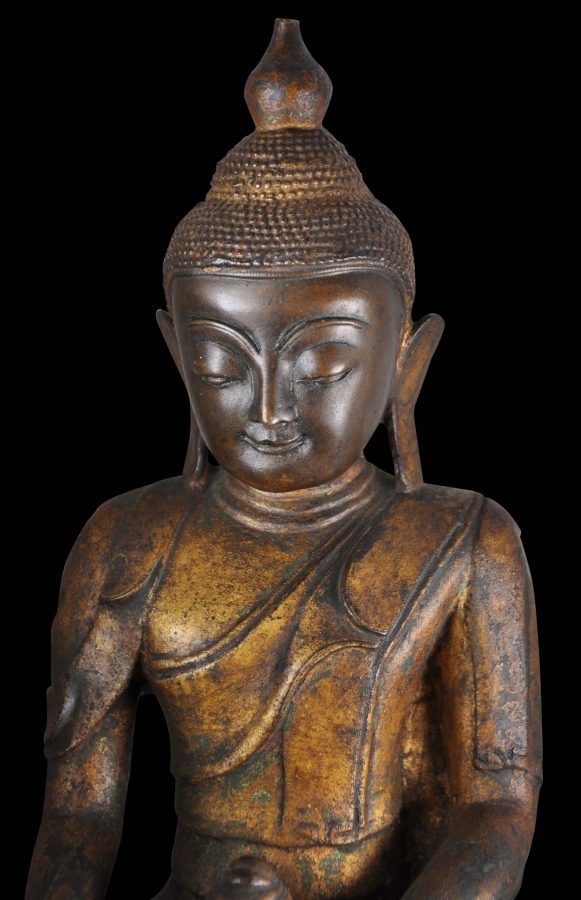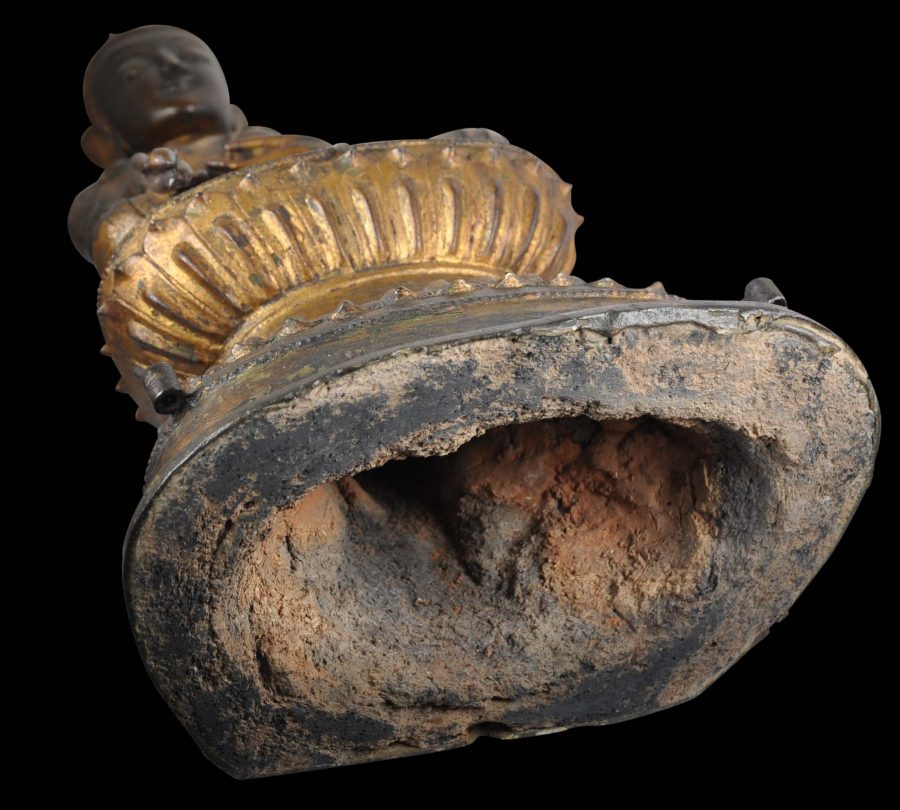Enquiry about object: 5417
Burmese Gilded Bronze Seated Ava Jambupati Buddha
Burma Late Ava Period, 17th century
height: 47.5cm, width: 25.5cm, depth: 16.5cm
Provenance
UK art market; almost certainly has been in the UK since the colonial era.
This gilded bronze Buddha sits on a tall, well-cast, double-lotus throne that is sharply waisted. This image has been cast as a single piece. It is of good size, with a pleasing ‘boyish’ face which itself has a pleased countenance.
The image sits in dhyanasana with his left hand in meditation mudra, resting in his lap and holding a bowl filled with medicinal nectar and fruit. His right hand rests on his knee with palm facing outward in the mudra of granting blessings. The bitter, medicinal fruit of the myrobalan plant is held between the thumb and index finger.
Such a representation of the Buddha, sometimes known as the ‘medicine Buddha’ or Jambupati Buddha is uncommon ion Burmese Buddhist iconography.
The image has been cast with the head facing slightly forward, the eyes are half-closed with prominent, arched eyebrows.
The nose is prominent and the lips turn up at the corners in a smile. The ears are elongated and flared – they are those of a prince. The hairstyle is akin to neat rows of peppercorns.
The image wears the robes of a monk but they are more elaborate than mere simple robes: artistic licence has seen the robes develop into something more regal or princely with extra flaps and folds.
There is a bud-like jewel to the top of the Buddha’s head.
Two lugs at the front of the throne would have supported two small disciple figures – probably the disciples Sariputta and Mogallana – which no longer are present.
A seated gilded bronze Buddha with similar dress and facial features and attributed to the 14th-15th century is illustrated in Proser (2010, p. 41).
The image is in excellent condition and is without repairs or cracks.
A similar example with less elaborate robes and in the related bhumisparsa mudra position, of similar proportions and with the disciples no longer present, is in the National Museum in Rangoon (Yangon) and illustrated in Fraser-Lu & Stadtner (2015, p. 152).
References
Fraser-Lu, S., & D.M. Stadtner, Buddhist Art of Myanmar, Asia Society Museum, 2015.
Karow, O., Burmese Buddhist Sculpture: The Johan Moger Collection, White Lotus, 1991.
Lowry, J., Burmese Art, Victoria and Albert Museum, 1974.
Proser, A., (ed.), Pilgrimage and Buddhist Art, Asia Society Museum/Yale University Press, 2010.


